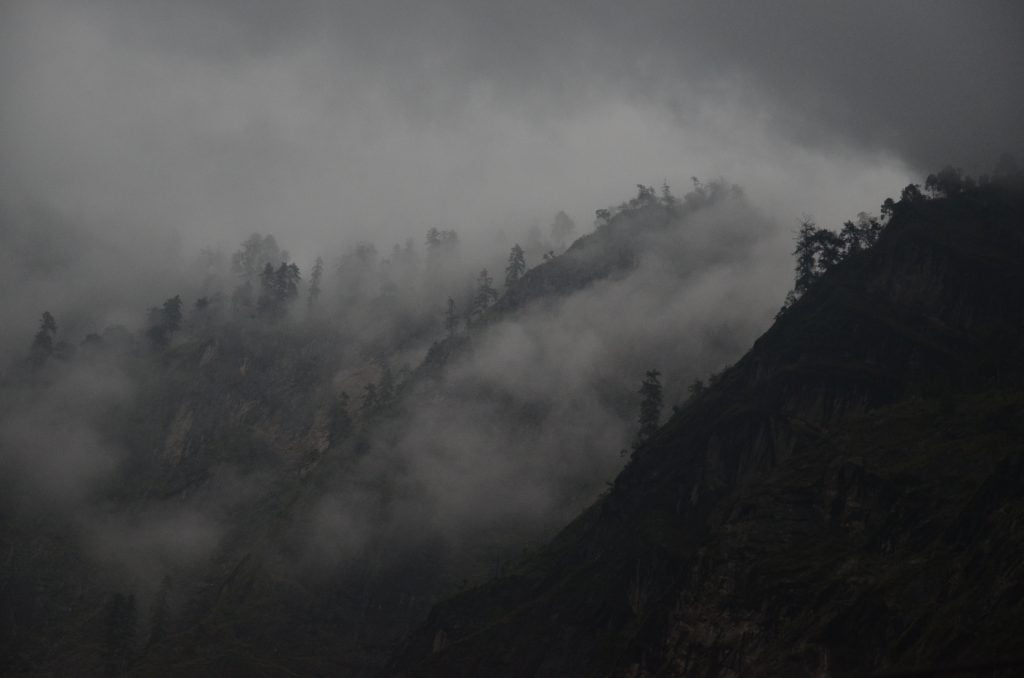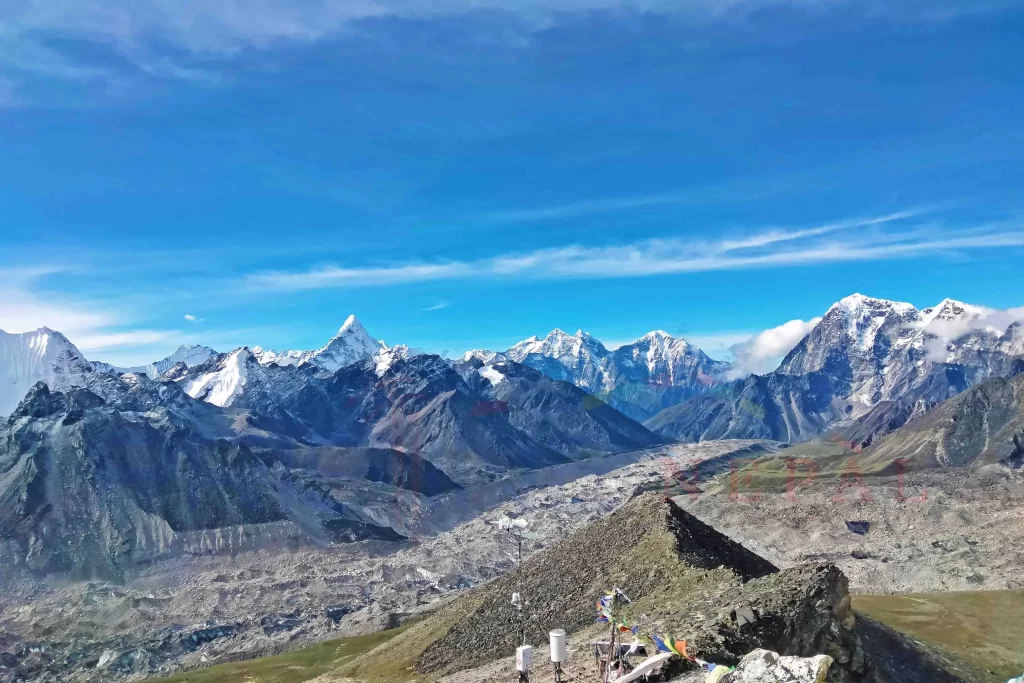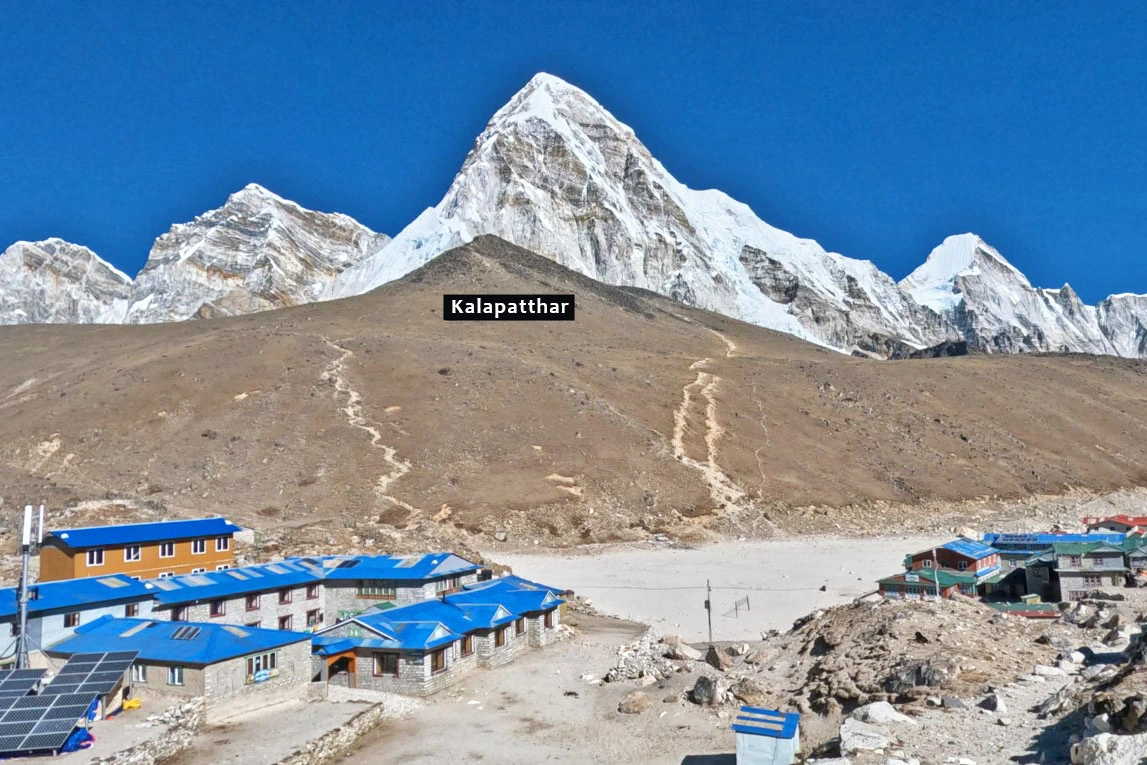If you had a trek to Everest Base Camp then you might know about the Kalapatthar of Everest. Standing at an impressive altitude of 5,644 meters (18,519 feet), Kalapatthar provides a stunning viewpoint for adventurers and trekkers. Its name, “Kalapatthar,” translates to “Black Rock” in Nepali, referring to the dark-colored summit that stands tall against the backdrop of the majestic Everest. It is considered one of the highest vantage points in the world.
To be the truth, from the top of Everest Base Camp, you won’t see Mt Everest. However, if you venture to the renowned vantage point of Kalapatthar, the majestic sight of Mount Everest and its neighboring grand peaks becomes visible in all its glory.
Let’s dive more into the information regarding the Kalapatthar of Everest Region.

Where is Kalapathar located?
Kalapatthar is located in the Khumbu region of Nepal, which is part of the Solukhumbu District. Specifically, it is situated near the Everest Base Camp, which is at the foot of Mount Everest, the highest peak in the world. The Khumbu region is in northeastern Nepal, bordering the Tibetan Autonomous Region of China. Kalapatthar itself is a prominent peak in the area, offering stunning views of the surrounding Himalayan mountains, including Mount Everest.
How to reach Kalapatthar of Everest?
To reach Kalapatthar, most trekkers embark on the famous Everest Base Camp Trek. They make their way through a number of picturesque trails and Sherpa villages before eventually arriving at the base camp, which is an achievement in itself.
The trek to Kalapatthar begins in Lukla, serving as the starting point for your adventure. From Lukla, you embark on a short trek to Namche Bazaar via Phakding. Notably, even from Namche Bazaar, you can enjoy a stunning view of Mount Everest, adding to the allure of the journey. After a day of rest in Namche Bazaar, the next leg of the trek takes you to Tyangboche. Here, you have the opportunity to visit Nepal’s oldest monastery and delve into its rich history.
Continuing the trek, you cross Fungi Thanga and arrive at Dingboche. It is essential to take an acclimatization day in Dingboche to allow your body to adjust to the high-altitude surroundings, ensuring a safer and more enjoyable experience.
Following the rest day in Dingboche, you proceed towards Lobuche and then to Gorakshep. Finally, the pinnacle of the journey awaits as you hike from Gorakshep to Kalapatthar, where the unparalleled panoramic views of the Himalayas unfold before your eyes.
This itinerary typically spans a minimum of 11 days, catering to beginners who prefer a more gradual pace. However, for those experienced in rapid base camp trekking, the Kalapatthar trek can be completed within 8-9 days. It is important to note that there are no shortcuts or vehicular access available for this trekking route. Therefore, trekking remains the sole means to reach the majestic Kalapatthar.
However, if trekking is not your preference, an alternative option is to reach Kalapatthar via a helicopter ride. It is worth mentioning that this option may come with a higher cost compared to traditional trekking methods.
Weather in Kalapathar of Everest

The weather in the Kalapatthar region can be highly unpredictable, primarily due to the impact of global warming. This unpredictability was evident in 2019 when even during the beginning of the peak trekking season, there were instances of inclement weather that caused flight delays. However, the optimal months for trekking in Kalapatthar are during the Autumn season (September to December) and the Spring season (March to June).
It is important to note that both the summer and winter seasons pose significant challenges and risks for trekking in this area. During the summer season, there is an increased risk of avalanches, extreme colds, and adverse weather conditions. Similarly, the winter season presents its own set of dangers, including harsh weather and a higher likelihood of avalanches. Despite these risks, some individuals still choose to trek in the winter season to avoid the crowds that are present during the peak season. However, it is strongly advised against trekking in the winter season due to the significantly lower chances of survival in such harsh conditions.
Why should you not miss the hike to Kalapatthar?
Embarking on the hike to Kalapatthar is an experience that should not be missed for several compelling reasons:
- Spectacular Panoramic Views: Kalapatthar offers unparalleled panoramic views of the Himalayas, including the iconic Mount Everest. From this vantage point, you can witness the majestic beauty of the world’s highest peaks, such as Lhotse, Nuptse, and Changtse. The awe-inspiring sight of these towering mountains against the backdrop of the Himalayan range is an unforgettable visual feast.
- Close Encounter with Mount Everest: Kalapatthar provides one of the closest vantage points to Mount Everest. Standing at an elevation of 5,545 meters (18,192 feet), you can marvel at the sheer magnitude and grandeur of this legendary peak. The feeling of being in the presence of the highest point on Earth is truly awe-inspiring and leaves a profound impact.
- Sense of Achievement: Reaching Kalapatthar requires physical endurance and determination. The challenging trek and the ascent to the summit demand perseverance and mental strength. Standing atop Kalapatthar, you will experience a tremendous sense of accomplishment, knowing that you have conquered the journey and reached one of the world’s most renowned vantage points.
- Cultural and Historical Significance: The Khumbu region, where Kalapatthar is located, is rich in Sherpa culture and history. Along the trekking route, you will encounter Sherpa villages, monasteries, and prayer flags, offering insights into the local traditions and way of life. Kalapatthar itself holds significance as a strategic viewpoint for mountaineering expeditions and serves as a reminder of the remarkable feats achieved by climbers who have conquered Everest.
- Magnificent Sunrise and Sunset: Witnessing the sunrise or sunset from Kalapatthar is a magical experience. As the first rays of light illuminate the mountain peaks, or as the sun dips below the horizon, the golden hues that adorn the Himalayas create a breathtaking display of colors. These moments of natural beauty are etched into memory and offer a profound connection with the majestic surroundings.

In conclusion, the hike to Kalapatthar presents a unique opportunity to witness the Himalayas in all their glory, stand in awe of Mount Everest, and experience a profound sense of accomplishment. The combination of breathtaking views, cultural richness, and the chance to be in the presence of the world’s highest peak makes it an unforgettable adventure that should not be missed.
Kalapatthar’s significance extends beyond its physical beauty and mountaineering allure. It symbolizes the human spirit of adventure, perseverance, and the desire to conquer seemingly insurmountable challenges. It stands as a testament to the determination and passion that drives individuals to explore and push their limits.

